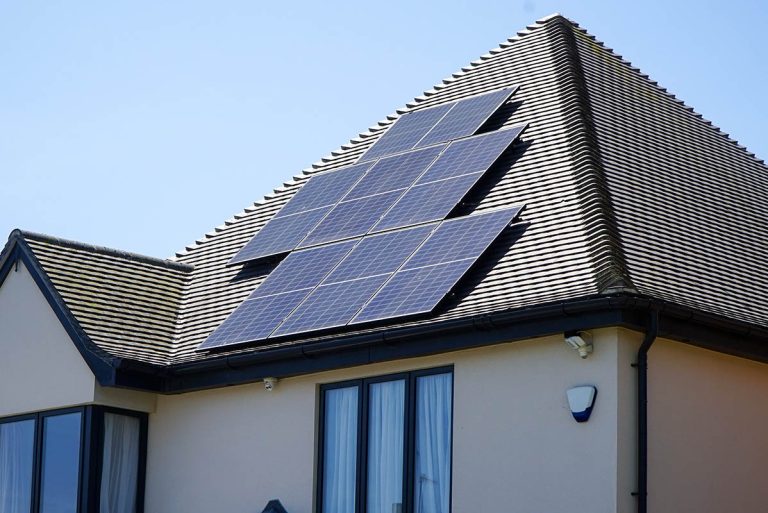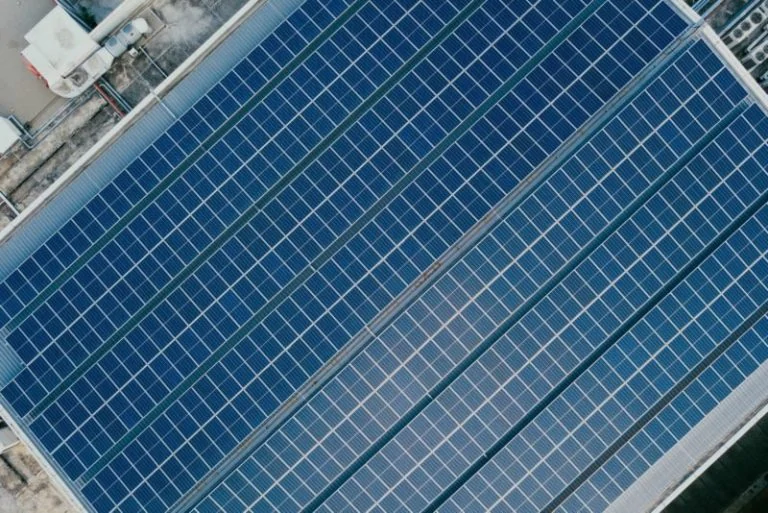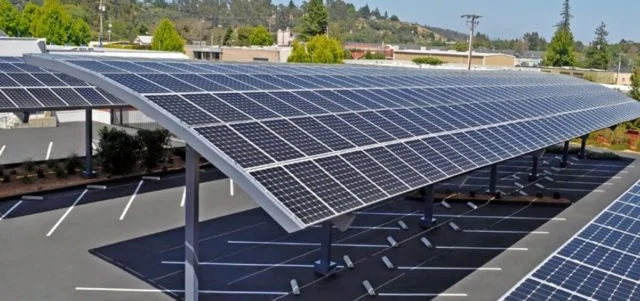Once you take the leap into renewable solar energy for your home, you’re immediately faced with many choices. At the top of the list is your pick of the type of solar inverter for your array.
Should you go for a tried-and-true string inverter, a string inverter upgraded with a power optimizer, or a high-tech microinverter?
Maybe you’re even contemplating a solar-plus-storage system and the hybrid converter that streamlines its functioning.
There are many factors to weigh carefully when selecting the best solar inverter to meet your needs. It can quickly become a confusing mess of technical details and jargon. You could feel like you’re wading through mud — and sinking fast.
To make the process easier, here you’ll find a checklist of 13 important considerations related to solar inverters. Depending on your unique situation and the size of your solar system, the numerous advantages and disadvantages of each option may tilt your ultimate decision one way or the other.
What is a solar inverter?
A solar inverter is an electronic device that functions as the central controller of your solar array. It’s like the “brains” of the whole system.
Think of the photovoltaic (PV) panels on your roof or property like the workhorses of your solar setup. They are doing the work of capturing the sun’s energy and transforming it into electrical energy.
However, the direct current (DC) electricity that the panels produce isn’t yet useful to you (not counting some off-grid situations). It can’t run your refrigerator or cool your home until it’s converted into alternating current (AC).
This is where the solar inverter comes in.
A solar inverter is responsible for inverting the direct current (DC) electricity produced by solar panels into the alternating current (AC) electricity used by the appliances and HVAC system in your home.
Solar inverters vary in how much electric current or voltage they can handle. In order for them to work at all, there’s a minimum amount of voltage they must receive. And, of course, they must be rated high enough to handle the maximum amount of power that your solar array can produce.
The “brainy” solar inverter also relays critical information to you about how well your solar setup is producing energy for your home. This data allows you to monitor system and/or panel efficiency.
Since 85% of all solar system failures in the first 10 years of operation is caused by the inverter, it’s essential that you choose the right one, make sure it’s installed correctly, and monitor its functioning regularly.
Here is a short video that explains the basics of various types of solar inverters.
What are the major types of inverters for home solar?
There are three main types of solar inverters for home use on the market today:
- string inverters
- microinverters
- hybrid inverters
String inverters and microinverters have one commonality whether they are grid-tied or off-grid. They both convert DC to AC electricity, and then send usable AC electricity to your appliances.
When they are grid-tied, they also direct any excess AC to the utility grid. There is no onsite battery storage requirement with string or microinverters. (However, for most off-grid purposes at least, a battery pack connection is present.)
String inverters differ from microinverters in terms of where the DC-to-AC conversion occurs, as discussed below.
String inverters plus power optimization
Power optimizers (also called DC optimizers) are electronic devices used in conjunction with string inverters. They are placed on or behind the solar panels themselves where they improve the energy efficiency of individual panels.
The optimized DC current then travels to the string inverter located on a ground-level wall where the electrical current inversion occurs.
How do hybrid inverters work?
Hybrid inverters serve as a solar inverter (like string inverters or microinverters) and as a battery inverter combined. This is why they’re called “hybrid” or “multi-mode” inverters.
Hybrid inverters convert electricity from DC to AC for home usage with excess sent to the grid. They may also convert AC from the grid into DC and store it in a DC battery pack.
Being so versatile, hybrid inverters can also accommodate AC batteries in a similar fashion.
Because of the many innovative capabilities and features of hybrid inverters, we’ll explain how they can fit into your home solar-plus-storage system in a separate post.
What is a string inverter?
A string inverter is an electronic device that converts solar energy in the form of direct current (DC) electricity into alternating current (AC) electricity.

In a 2015 report, approximately 45% of U.S. homes with solar installations used traditional string inverters in 2014. The rest used module-level power electronics (MLPEs): microinverters or power optimizers, both of which had just entered the marketplace a few years previous to the study.
How does a string inverter work?
When solar panels are connected in series, they form what’s called a “string” or group. Depending on the maximum energy production in your array and the panel placement, there may be more than one string. Typically, one string contains 8-15 panels.
In order to receive maximum power production for a given string, all the modules must be of the same type, rated at the same wattage, and situated at the same angle and direction to the sun.
Each string transmits high-voltage DC electricity from the panels to an inverter which is often located close to the electric panel on the ground level of your home. The inverter may be mounted outside, in your garage, or in the basement.
All strings are connected to the inverter, usually as separate inputs into the device. Depending on the size of your solar array and its organization, you may even need more than one string inverter to handle all of the multiple strings.
The strings transfer their DC electricity inside the inverter where it is converted to AC electricity.
Although you can evaluate the performance of each string of panels, it is not possible to monitor individual PV modules when you use a string inverter. To accomplish that, you need a power optimizer.
When there’s any type of shading or obstruction on one panel in a given string, like a tree or chimney shadow, the energy production of all the panels in that string reduces to that of the poorest-performing one. Of course, this means your total system energy production can significantly decrease.
To give you some idea of how serious a problem shading can be, a shadow the size of a regular sheet of paper can reduce energy production of the string that contains it by 50%!
If panels on more than one string are affected, a near-total blackout of energy production may result until the problem is resolved.
What are the advantages of a string inverter?
The major advantages of string inverters include:
- Excellent and long standing track record
- Today’s most economical inverter option
- Easily integrated with DC optimizers to improve energy production
What are the disadvantages of a string inverter?
Some of the major disadvantages of string inverters are:
- Short warranty (typically 5-12 years)
- Will need to be replaced during your solar array’s lifetime since they usually last only 12-15 years while your system performs for up to 30 years
- Shading, obstruction, or damage to one panel affects the entire string of PV modules it’s connected to
What is a power optimizer?
Also called a DC optimizer, this electronic device, referred generally to as module-level power electronics (MLPE), increases the power efficiency of individual solar panels by smoothing out (conditioning) the electrical current produced by those PV panels.

There is usually one DC optimizer attached to each panel in a solar setup. Alternatively, as a cost-saving measure, they may only be attached to panels that experience intermittent shading or are otherwise poorly placed for maximum power production.
Power optimizers may be fitted to PV panels in the factory during module manufacture or during solar installation at your home.
When power optimizers are integrated with a string inverter, each one allows instant, remote diagnosis in the case of malfunctions so the optimizer or the panel attached to it can be repaired, replaced, or unobstructed without sacrificing the energy production of the entire system.
How does a power optimizer work?
A power optimizer modulates or conditions the energy produced by an individual PV panel. It maximizes a solar module’s electrical output which naturally varies slightly throughout the day depending on many factors such as passing clouds or temperature changes.
The power optimizer readies the panel’s power to be delivered in a form (in terms of proper voltage and current) that’s appropriate for a particular string inverter. There are some optimizers that can condition 2+ panels at a time.
DC optimizers accomplish these functions through maximum power point tracking (MPPT). They calculate the maximum amount of energy produced by a panel by capturing the “sweet spot”.
Then, the power optimizer transmits this optimized DC electrical energy to the inverter that subsequently performs the DC-to-AC conversion.
When the current is optimized, the inverter can most closely approximate a pure sine wave as the I-V curve below shows in blue rather than producing a square curve (shown in yellow). As a result, household appliances will operate more efficiently and the grid will more easily accept any power your solar system sends back to it.

What are the advantages of a power optimizer?
Some of the major advantages of a power optimizer are:
- MPPT capability increases the efficiency of individual solar panels
- Prevents shutdown of an entire string of panels and possibly the entire solar array during temporary obstruction or damage
- Allows for remote monitoring to facilitate troubleshooting and eventual repair or replacement
What are the disadvantages of a power optimizer?
The major disadvantages of a power optimizer include:
- Additional labor costs (unless PV modules come manufactured with them already installed)
- In cases where a string inverter will do fine on its own, (i.e., no shading, south-facing array, and uniform pitch), they may be an expensive and extraneous component
- Does not eliminate dangerously high voltage that leads to potential induced degradation (PID) of PV panels over time
What is a microinverter?
Considered a high-tech premium product, microinverters are module-level power electronics (MLPEs) that convert the DC electricity produced by PV panels into AC electricity that’s usable by household appliances and HVAC systems.
In other words, a microinverter is like a tiny string inverter for a single PV panel located on that particular panel. They also do DC optimization before the inversion.

In a typical home solar array using microinverters, each PV panel is equipped with its own microinverter and functions completely independently of all the others. In other words, there is no single point of failure where the entire system could falter, like at a string inverter.
Microinverter independence also means your panels can be of different wattages or types, and located anywhere on your property, and still function maximally.
If you’re thinking of expanding your solar production in the future, it’s much easier to do with microinverters than string inverters.
Recently, there are more advanced microinverters that perform the DC-to-AC conversion and utility grid send-back for 2-4 panels in a solar array. With these, you’ll have less hardware, lower installation costs, and fewer places where something could go wrong.
How does a microinverter work?
When solar panels are connected in parallel, each one functions independently of all the rest. In this arrangement, the solar energy produced by an individual panel is transformed from DC to AC electricity by the microinverter affixed behind it or close to it.
To achieve the best optimization and smoothest conversion, today’s microinverters employ MPPT (as described above) and other advanced methods to optimize the solar power of each panel of your home system.
After the inversion, AC electricity enters your home where it can run your appliances and heat or cool your home. Any excess is sent to the utility grid. (Or to a battery pack if one is set up to receive electrical current.)
What are the advantages of a microinverter?
Major advantages of a microinverter include:
- Longer warranty (typically 25 years)
- Works well under less than ideal or varied conditions (e.g., different pitched areas of a roof, shading)
- Avoids dangerously high voltage on your roof or property
What are the disadvantages of a microinverter?
Some of the major disadvantages of a microinverter are:
- High expense
- More sophisticated electronics, componentry, and wiring mean there are more places where it could fail, potentially requiring more service calls
- Newer technology that has not yet been extensively tested in the field and improved through multiple iterations like the traditional string inverter has
What is the most popular type of solar inverter used in the United States?
In the United States, 2019 data show that MLPEs dominate home solar. Approximately 60% of U.S. homes use string inverters + DC optimizers. Solar Edge (power optimizers) and Enphase (microinverters) are the leading companies at the present time.
For more information about the differences between these two brands, check out our SolarEdge vs Enphase comparison.
13-Point summary table: string inverter, string inverter + DC optimizer, and microinverter
Which is the best solar inverter for you? There are a number of factors that are important to consider before buying. Here is a brief description of each of 13 major points followed by a table of information that allows you to weigh your options directly against each other.
- Price: As the original solar inverter and the most commonly used, a string inverter is the cheapest. However, its lifespan is shorter than the useful life of your PV panels, so you will likely have to purchase at least one other string inverter for the duration of your solar array (25-30 years). When you pair power optimizers with a string inverter, you’re in the ballpark range of expensive microinverters (although costs for both are falling rapidly).
- Warranty: Look carefully at the warranty information of all the components of your solar array before purchase. The warranty period of the string inverter is the most variable of all. An excellent one may be warrantied for up to 12-15 years, but the standard is, at most, about 10 years. Warranties on power optimizers and microinverters usually run for 25 years. This in itself is a testimony to their quality.
- Efficiency: No matter how superb your PV panels may be, if your inverter isn’t good quality, your system won’t produce as much electricity as it’s theoretically capable of doing. All in all, when under obstruction-free conditions, all three options considered here are comparable in the level of efficiency they support. For home systems, an efficiency of 80% is good. Losses are mostly due to resistance in the circuitry made worse at high temperatures.
- Installation: When looking at the inverters by themselves, there’s extra DC cabling and protectors with string inverters (with or without power optimizers). Installing this adds labor and material costs to your bottom line. Some installers may even use a separate copper wire (expensive) to complete the hook up. By contrast, these days, unlike the past when they had just entered the market, microinverters are relatively simple to set up using plug-and-play connectors that attach much like Legos.
- System Expansion Capability: If you’re thinking about adding an EV charger in your garage for when you purchase an electric vehicle, or just increasing your home solar power, adding on solar panels with a microinverter is easy to do. On the other hand, you’re limited with a string inverter if it has total wattage restrictions per string or per array. A multi-level or irregularly-shaped roof adds more complexity to the challenge of expansion with string inverters. In this case, you’d likely have to add another inverter or two to your system.
- Ease of Troubleshooting: DC optimizers and microinverters make monitoring of individual panels effortless. Just check online any time! You can pinpoint the exact location of a poor-performing panel, making repair or replacement simple. Note, however, that while system evaluation is free, you may need to pay extra for individual panel monitoring depending on the company. Check before purchasing to avoid surprises later. String inverters will be able to indicate which group of several panels is defective or malfunctioning, but that’s it. A technician would need to investigate all the panels in that string on your roof to make the final determination of which solar module is under-performing and why.
- Remote Monitoring/Smart Home Management: You can find out how your power optimizers and microinverters are doing even when you’re on vacation. If you have battery storage, you can also program where the solar power goes (appliances, battery, or back to the electric grid) and when. This option serves as a cost-effective strategy for people with electricity rates that vary during the day/night or with the seasons. Smart inverters are an emerging technology so expect expanded capabilities soon. On the other hand, with a traditional string inverter, you’d have to look at the display on your wall-mounted device to see how well your system is performing — or not. If the number of watts displayed is lower than it should be, then a service call is required to bring your system up to speed.
- Safety (Rapid Emergency Shutdown): Most jurisdictions have laws regarding rapid shutoff of solar systems in case of power outages, fire, or storms. Software for DC optimizers and microinverters include this capability. Not so for string inverters. In case of an emergency, you’d need to manually turn the breaker off in one or two places. Make sure your installer informs you about how to do this if you opt for a string inverter. Since solar system fires are on the rise in certain areas, this is a life-or-death consideration.
- Maintenance: In most cases, almost all of the time, your solar array will run smoothly by itself. A regular peek at the string inverter display or a quick glance online will assure you that all is running normally. In case of a hail storm, wildfire, or hurricane, there could be breakage or destruction. Since microinverters have the most movable parts, they could suffer the most damage and need to be repaired or replaced. However, since both microinverters and power optimizers are normally placed under the panels, they may be able to weather some storms (pun intended). In all situations, regular system checks on your roof, when you get them cleaned every year or two, may be a good idea to ensure optimal power performance.
- Adaptability to External Conditions: String inverters are the most inflexible of all three options. There must never be shading and you must have a southward-facing orientation on a uniformly-pitched surface to max out on performance. Anything other than this, however, like differently-angled roof sections, fallen leaves, or tree shadows, you’re in for a disappointment. Microinverters and DC optimizers can adapt better to these temporary conditions. Although neither can completely nullify the obstruction’s effect or render the direction or pitch uniform/ideal, at least an entire string of panels won’t be adversely affected.
- Battery Compatibility: In cases where you wish to expand your solar power capacity and/or store it in batteries, you will need to purchase a hybrid inverter or add on a battery inverter and/or charge controller to your existing home solar system. There are many types of batteries available today and development of new technologies is happening all the time. If you want solar storage, it’s advisable to purchase batteries at the same time you go solar, rather than later, to ensure battery compatibility. The overall efficiency of your solar + storage system will be higher when it’s DC-coupled simply because there’s only one switch from DC to AC compared to three in an AC-coupled system. (There is some efficiency loss with each conversion.)
- Functionality: All three inverter types have undergone regular upgrades and improvements over time to enhance their performance in transforming DC to AC electricity. However, to be maximally functional, string inverters have strict requirements regarding complete and permanent absence of shading, a south-facing direction, and level pitch under all PV panels. DC optimizers lessen the impact of sub-optimal performance due to shading or less-than-ideal direction/pitch, but cannot completely eliminate them. Microinverters have no single point of failure like the other two options have to a degree. Given their longer warranty, microinverters are better on this score.
- Reliability: Besides the significantly shorter lifetime of string inverters, there is another cause for concern with them used with or without DC optimizers. The high voltages coursing over the panel surface all the time may eventually result in potential induced degradation (PID). Although PID may not occur until years after installation, it could result in chronic sub-optimal performance or even system failure. Microinverters aren’t subject to PID to the same degree, if at all, because their voltages are significantly lower.

Wrap up on microinverter vs string inverter for home solar
When choosing the type of solar inverter for your home solar system, there are many important aspects to consider.
There is no “best” solar inverter for all applications. It all depends on your unique situation and the size of your solar system.
For homeowners who have absolutely no shading issues, and the entire solar array is placed on a uniformly-pitched roof or ground mount system, a string inverter will make the most economic sense.
However, there are a few cases where a DC optimizer with a string inverter or a microinverter is a better option for you.
For example, if you have some shading issues at one or more locations on your solar modules during some part of the peak time for electricity production (10 am – 3 pm in most regions), a string inverter by itself is not the best choice.
If your panels are spread over differently-pitched areas of your roof or facing different directions, a traditional string inverter won’t maximize the energy production of your solar modules.
In these situations, opt for a string inverter + DC optimizer on at least the affected panels or a microinverter.
For a more thorough analysis of the top 13 points to consider when making your solar inverter selection, see the summary table above.













![Eco-Worthy Solar Panel Review 2024 [Includes Buyer’s Guide]](https://greencoast.org/wp-content/uploads/2019/02/Eco-Worthy-Review-and-Buying-Guide-e1574180788859.jpg)